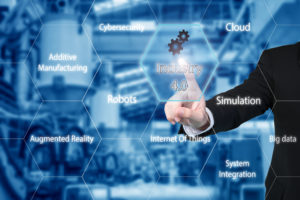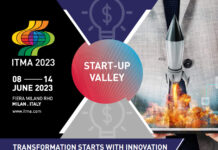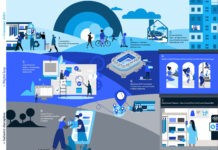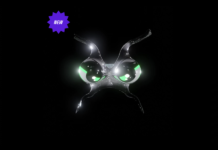 Industry 4.0 is part of the language of those who deal with industrial development as an application of a wider concept of economy 4.0 to productive contexts. According to McKinsey, the new phase will see digital technology prevail along four development lines: 1 – Use of data, calculation power and connectivity. It includes big data, open data, Internet of Things, machine-to-machine and cloud computing to centralise and to store information. 2 – Analytics: ability to gain value from collected data. This includes machine learning to improve a machine performance as a function of data collected and processed. 3 – Man-machine interaction, involving “touch” interfaces and enhanced reality. 4 – Shift from digital to “real” by means of additive manufacturing, 3D printing, robotics, communications, machine-to-machine interactions and new technologies for a focused and efficient energy storage and use; costs would be rationalised and performance optimised. In the 9th release of a report on near future innovations AIRI (Associazione Italiana per la Ricerca Industriale – Italian Association for Industrial Research) pointed out 11 Technology Programs for the manufacturing industry [1]. In short, smart, environmentally sound machines and manufacturing systems, developed on the Smart-Factory /Ind. 4.0 model. New knowledge-intensive instruments to design, to simulate and to put into production advanced products. CAD CAM tools. Methods and standards to automate and integrate complex manufacturing systems able to manage an on-demand and just-in- time production. ICT methods and technology, Internet based, to integrate all supply chain players in real time, from retail to manufacturers, to suppliers. A technology to control, monitor, supervise, diagnose and maintain manufacturing systems in order to make them last longer and stay more efficient. Software techniques and solutions to plan manufacturing processes and logistics in real time. High performance sensors and mechatronics components to improve efficiency and quality of manufacture and of the final product. New configurations of environmentally friendly machines and systems to optimize energy efficiency and the environmental impact of manufacturing systems. New environmentally friendly process technologies to reduce consumption and emissions as well. 3D printing.
Industry 4.0 is part of the language of those who deal with industrial development as an application of a wider concept of economy 4.0 to productive contexts. According to McKinsey, the new phase will see digital technology prevail along four development lines: 1 – Use of data, calculation power and connectivity. It includes big data, open data, Internet of Things, machine-to-machine and cloud computing to centralise and to store information. 2 – Analytics: ability to gain value from collected data. This includes machine learning to improve a machine performance as a function of data collected and processed. 3 – Man-machine interaction, involving “touch” interfaces and enhanced reality. 4 – Shift from digital to “real” by means of additive manufacturing, 3D printing, robotics, communications, machine-to-machine interactions and new technologies for a focused and efficient energy storage and use; costs would be rationalised and performance optimised. In the 9th release of a report on near future innovations AIRI (Associazione Italiana per la Ricerca Industriale – Italian Association for Industrial Research) pointed out 11 Technology Programs for the manufacturing industry [1]. In short, smart, environmentally sound machines and manufacturing systems, developed on the Smart-Factory /Ind. 4.0 model. New knowledge-intensive instruments to design, to simulate and to put into production advanced products. CAD CAM tools. Methods and standards to automate and integrate complex manufacturing systems able to manage an on-demand and just-in- time production. ICT methods and technology, Internet based, to integrate all supply chain players in real time, from retail to manufacturers, to suppliers. A technology to control, monitor, supervise, diagnose and maintain manufacturing systems in order to make them last longer and stay more efficient. Software techniques and solutions to plan manufacturing processes and logistics in real time. High performance sensors and mechatronics components to improve efficiency and quality of manufacture and of the final product. New configurations of environmentally friendly machines and systems to optimize energy efficiency and the environmental impact of manufacturing systems. New environmentally friendly process technologies to reduce consumption and emissions as well. 3D printing.
The advantage o f technological solutions
The question arises as to what extent textile and fashion firms are ready to take advantage of this trend and of its technological solutions. The need to boost process efficient machines and systems through new digital systems (Internet of Things) makes itself felt even in factories in this industry. In fact, they are committed to manage a greater and greater number of variables covering the components and type of products and the structure of materials in the process, processing conditions hard to standardize, parcellation and offshoring of manufacturing processes. An integration of single machines and manufacturing processes in smart environments with design-manufacture-logistics integrations is an underexplored growth potential. On the other hand, innovation of design activities is time-tested, as CAD, simulation and prototyping tools are widely spread in the textile and fashion industry. However, there exist only some examples of such an approach including a study of a product life cycle, which can boost creative activities by means of assessments of economic and environmental sustainability of a prototype. An even more ambitious target would be connecting different though interactive supply chain players – such as suppliers, manufacturers, dealers, clients – with solutions tracking all manufacturing stages and key drivers, so as to forecast and manage variables and possible problematic issues. Once again, smaller businesses limit the application of advanced production streamlining systems. One can face this problem by organising network connections not only among traditional supply chain players (see the client-supplier relationship), but working closely with new players from the digital economy environment. According to Mise (Italian Minstry of Economic Development) this is a dynamic universe that gathers 5.439 innovative start-ups, growing by 5.8% as against 2015[2] with 21,118 members and in excess of 6,500 workers; the mission of these companies is the supply of services, mainly software and IT-consultancy services, as well as R&D activities.[3] One can easily imagine that a pool of manufacturers and digital companies will be able to boost both entities’ capacity to do business.
by Aurora Magni
[1] Airi, Le innovazioni del prossimo futuro. Tecnologie prioritarie per l’industria, Agra editore, Roma, 2016, from page 713 (Innovations in a near future. Priority technologies for the industry)
[2] Data from the first quarter of 2016
[3] http://www.sviluppoeconomico.gov.it/index.php/it/per-i-media/notizie/2034496-online-il-rapporto-trimestrale-sulle-startup-per-il-1-trimestre-2016 (quarterly report on start ups – 1st quarter, 2016)
Source: www.sustainability-lab.net/it/profiles/aurora-magni.aspx




